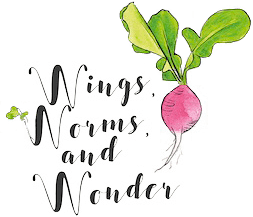Wonder Wednesday 112: Savoring Sage

It's Wonder Wednesday and this week we're savoring a favorite fall (and spring, and summer) garden flavor - Sage! This culinary herb gets lots of attention in recipes this time of year, but it's a great addition at any time!
This Wonder Wednesday, we're learning to make sage tea!
Ripe with a relaxing aroma and flavor to savor, historical relevance, and health benefits and properties, sage is an easy herb to grow in spring - fall (or all year round in warmer climates) and great to keep on hand dried all winter long.
And don't worry, your tea won't taste like your grandma's gravy!
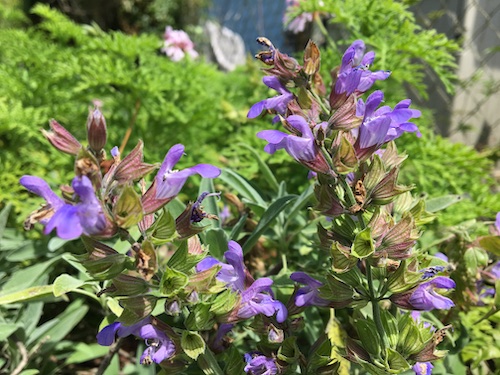
Materials:
Culinary Sage Leaves - these could be fresh or dried - Picked from your own garden or from a local farmer, or bought dried from a store.

Boiling water
Tea cups and/or teapot
Optional -
Additional fresh or dried herbs and botanicals such as rosemary or lavender, ginger or citrus zest.
Sweetener of your choice, lemon
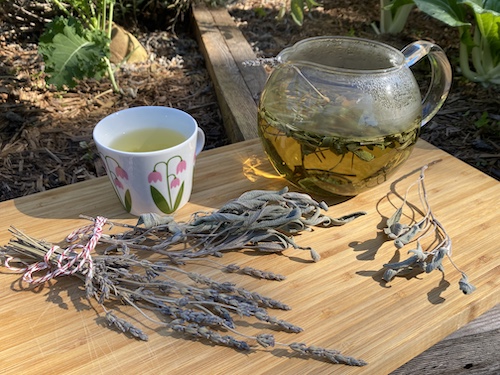
Preparation:
If your sage is fresh and you would like to dry it to make a batch of tea as a gift or to store, hang the stems upside down and let dry indoors for a few weeks.
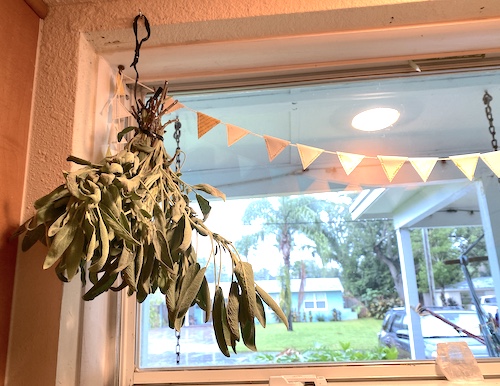
Then, remove the leaves from the woody stems.
Depending on your fresh sage harvesting situation, these preparation steps may be reversed or repeated.
For example, I needed to remove some woody stems, then dry the sage, and then remove the individual leaves from the smaller woody stems.
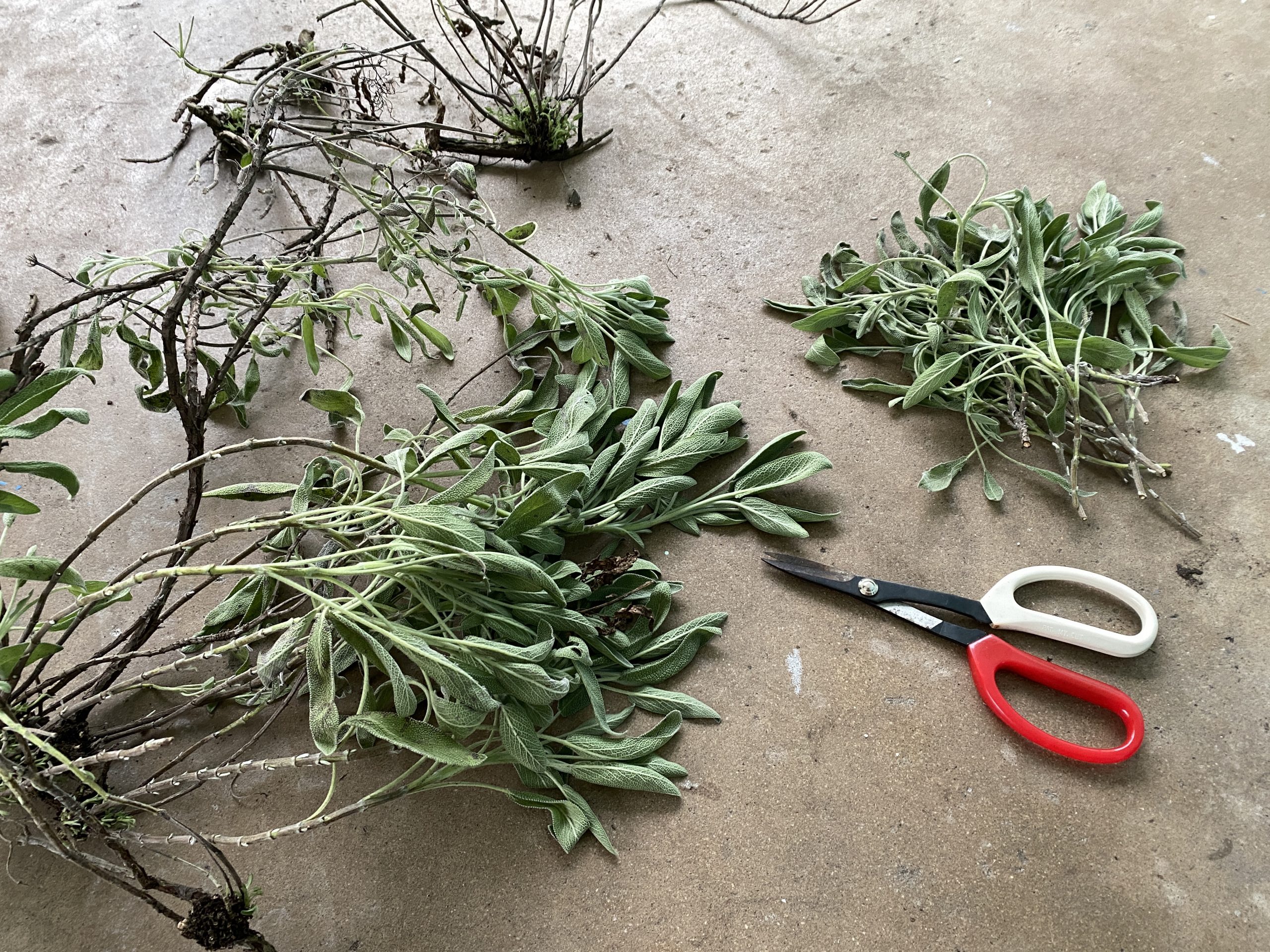
Prodecure:
Making the actual tea is easy!
Place 1 tbs of dried leaves, or 2tbs of fresh into a teacup or tea strainer in a teacup.
If using a teapot just multiply the amount of tablespoons of sage with how many cups of water the teapot holds.
At this stage if you want to add another herb like mint, lavender, or rosemary (fresh or dried) feel free.

This is french lavender I grew a while back. I added a sprig of dried english lavender to my teapot because it is what I grew most recently.
Bring the water to a boil.
Pour the boiling water over the leaves and cover. The reason the cup is covered is to hold in the heat and the refreshing aroma in the steam while the leaves steep.
Let steep for 10 minutes. Don't over steep or the tea will become bitter.
Remove the leaves and compost them.
Savor your cup of sage tea.
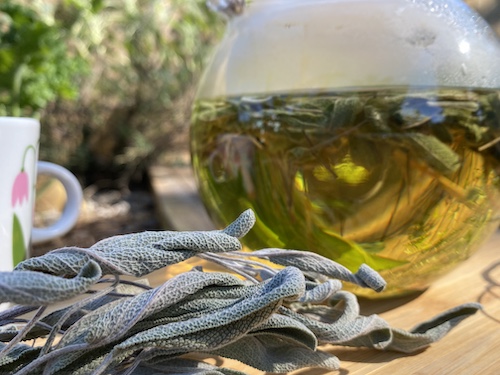
Extensions:
Add sweetener, lemon, or lemon zest to taste if you like, but it doesn't even need it! The sage is naturally sweet.
Add fresh ginger for some extra warmth and spice.
Grow your own culinary sage plants in a pot or in your garden! It flowers purple and in warmer climates the plants live for years! I think my plant is about 11 years old now!
I learned about burning sage from my old friend and mentor Wandering Turtle. He is a Choctaw man I studied organic farming with for a few years. Burning white sage to clarify a space is a historic, and now popular, practice. This tradition is a spiritual practice of Native Americans and First Nations People and should be honored and respected as such. If you would like to learn more about this practice, do so with utmost respect and consult a Native resource to avoid cultural appropriation.
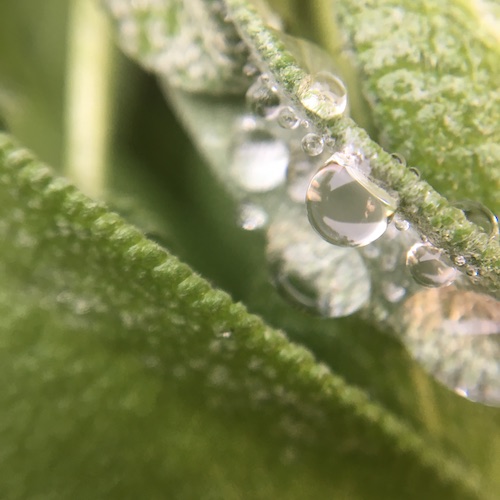
Indications:
While sage is healthy and natural, always be aware of your own body and limitations when trying new things.
Sage has anti-inflammatory and antiseptic properties, is a natural diuretic, is soothing for the stomach and digestive issues, and is high in vitamins A, B1, B2, B3, C, E and K, as well as calcium, copper, fiber, iron and magnesium.
Salvia officinalis, may mean “to heal” and “to be well," but too much of a good thing is still too much.
Sage contains thujone and camphor – components that can be harmful if consumed to excess. 1 -3 cups of sage tea a day is about as much as you would want to drink doctors say. But 3 cups? That is a lot! One cup is perfectly delightful.
In large amounts, sage may interact with various medications, including sedatives, anticonvulsants, and diabetes medication.
Pregnant women shouldn't take sage in excess of the amounts typically used in cooking. High intake of thujone may cause uterine contractions. Breastfeeding women should consult their doctors before drinking sage tea.
Avoid sage tea if you have allergies to sage or other plants in the Lamiaceae plant family
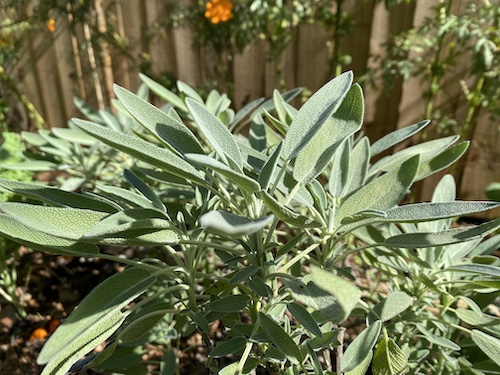
Who will you share a cup of sage tea with?
Share in the comments below!
Share photos of your Savoring Sage tea time on instagram #wingswormsandwonder
Seeds to Sprout:

Shop until 12/13!
The Etsy shop is open until 12/13!
After that it will be hibernating for about a month.
Be sure to get your orders in asap for all the gifting fun Wings, Worms, and Wonder offers!
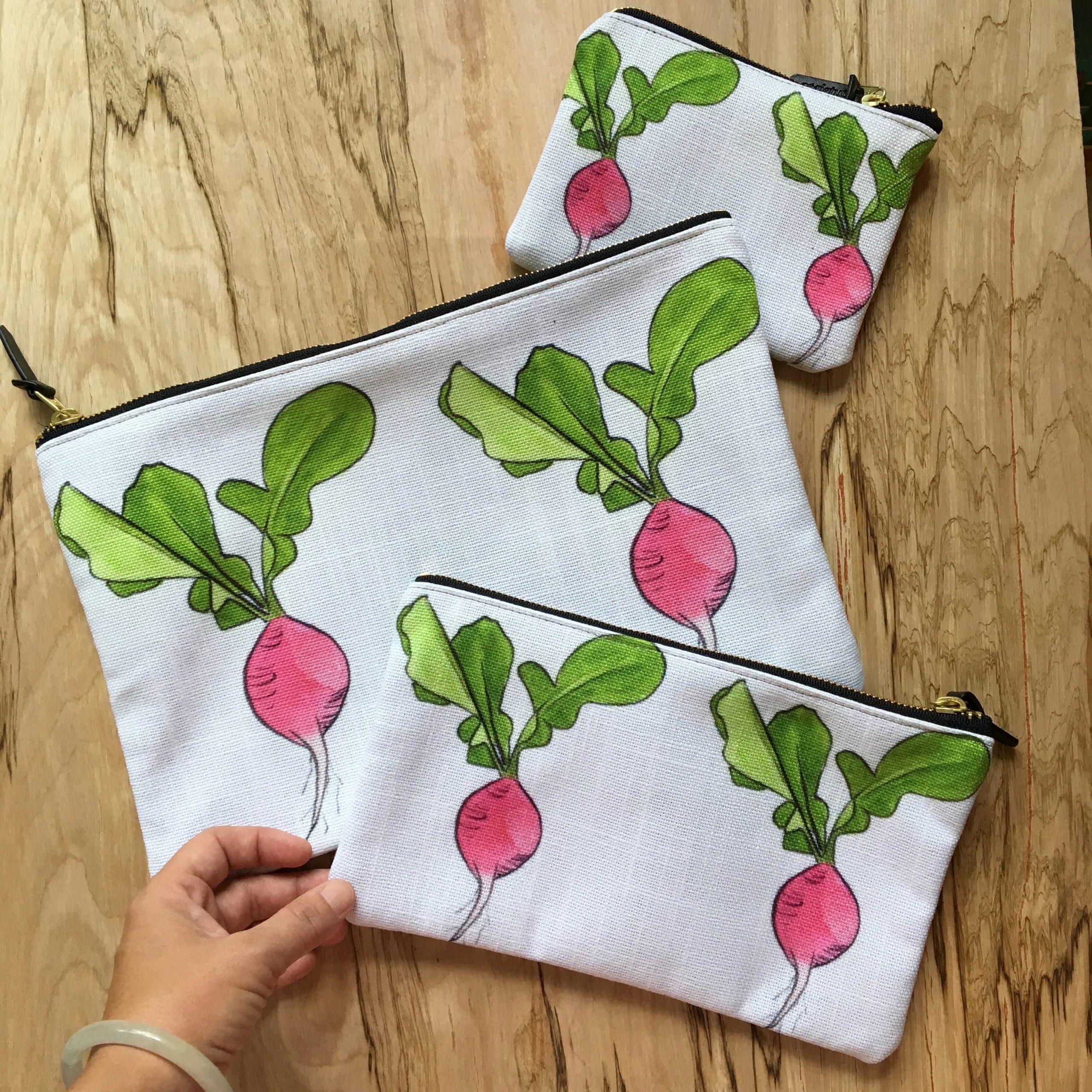
Nature Inspired Everyday!
The unique hip lifestyle items in the Wings, Worms, and Wonder Society 6 shop will bring smiles to even the most savvy young adult.
Pop nature into their everyday with these fun items from dorm room decor and tech accessories to journals and pouches!
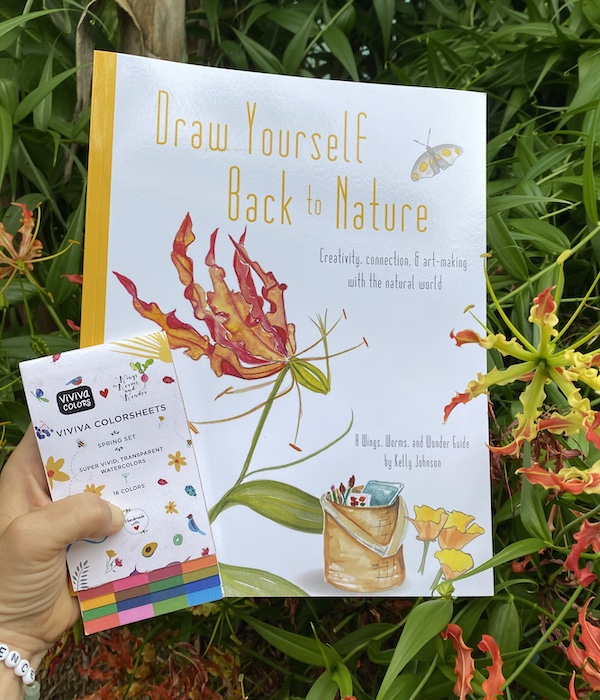
Gift Nature Journaling!
I was able to get the final signature watercolor paint sets from the Wings, Worms, and Wonder + Viviva Colors collab! Get your Draw Yourself Back to Nature book & paint sets while they last!
